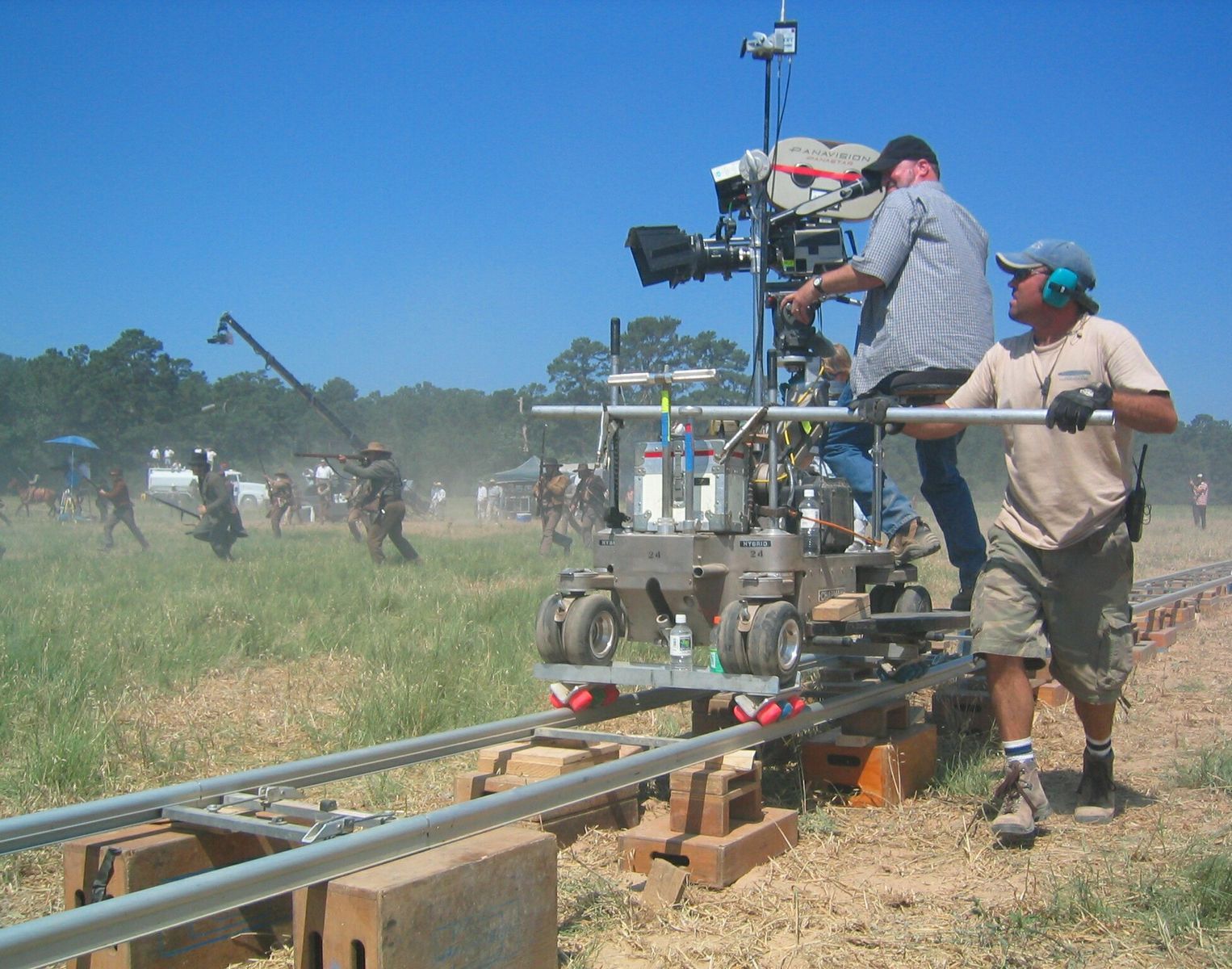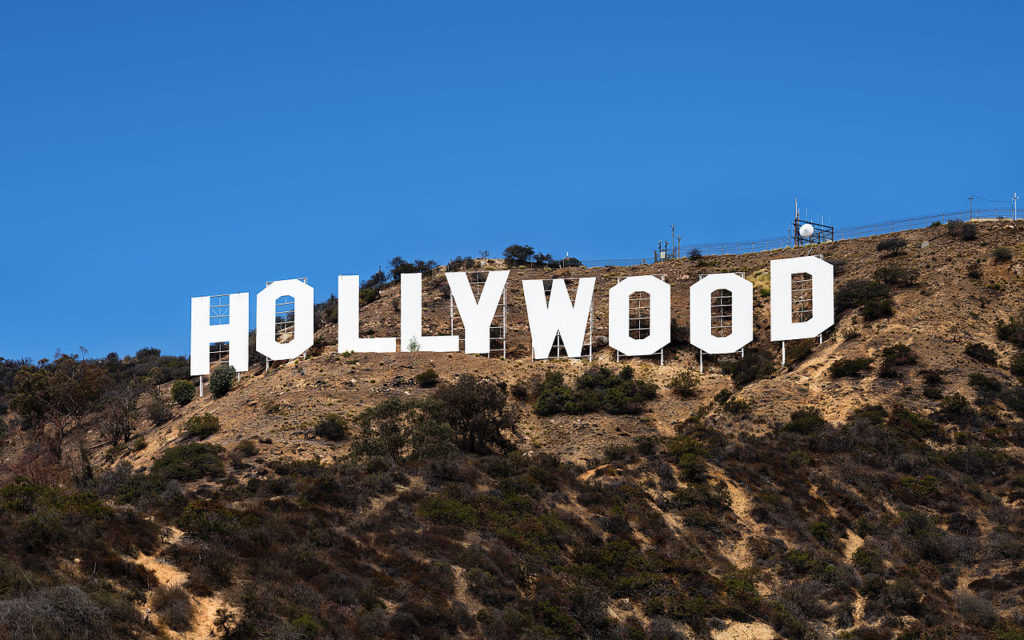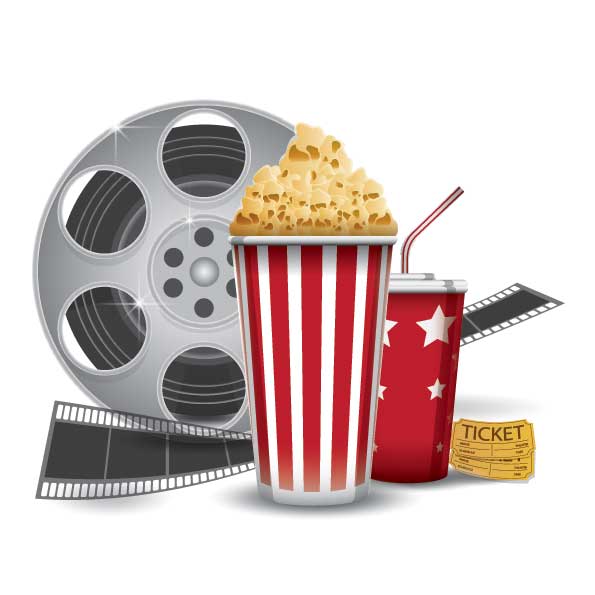Whether watching a movie at the cinema or at home, it’s easy to get caught up in a story and not consider all of the work that happens behind the scenes. In order for a film to come to life, however, it takes a significant amount of technical expertise by a highly trained crew of professionals. Although actors are generally applauded for a movie’s success, a good film is not possible without directors, producers, and the people who operate the cameras, lighting rigs, and other sophisticated film-making equipment. To perform their jobs, they must have an understanding of film and the language involved in the filming and editing process.
Glossary of Films Terms
Bird’s-eye view: Also known as an aerial shot, this type of shot is one that’s taken from overhead at an extreme height.
Close-up, Close shot: A shot that is taken at a close range and without many contexts
Continuity and Montage: The organization of events or actions on film so that a story seems unbroken and consistent
Crane shot: This type of shot is a type of high-angle shot that is taken using a crane. The crane is a large mechanical device or arm that carries the camera and the camera operator.
Dissolve: This is a technique in which one shot fades out while another fades in.
Deep focus: A focusing method when all objects from the far background to the immediate foreground are simultaneously in sharp focus
Dolly, tracking, or trucking shot: These are shots that capture moving action by using a camera that is mounted on a vehicle in motion.

Sean Devine [CC BY-SA 3.0], via Wikimedia Commons
Editing: The selecting and assembling of shots when creating a film
Establishing shot: A shot that’s used at the beginning of a film to provide context for following shots. It is typically a long or extreme long shot.
Extreme close-up shot: Only a part or specific feature of the character is captured on and fills the screen. Often, this is an actor’s eyes or mouth.
Extreme long shot: An exterior, panoramic image or view taken from an extreme distance
 Photo Credit: Thomas Wolf,
Photo Credit: Thomas Wolf,
Full shot: A shot taken from a distance that shows a character’s full body from their head to their feet
High angle shot: This is a shot that’s taken from above.
Long take: A shot that takes a long time
Low-angle shot: A shot taken of a subject or character from below or from a low angle
Medium shot: This type of shot is one that is far enough away to show the setting of the action, but it’s close enough to show the actor’s facial features. The actor’s body is visible from the top of the head to the waist or slightly above the knees.
Mise-en-scene: How all elements, including actors, lighting, and props, are arranged within a frame
Montage: A technique in which rapidly edited shots are put together to create scenes with unusual effects often indicating quick lapses in time. Multiple exposures, superimposition, and dissolves may be used to create the desired effects.
Oblique angle: A shot that’s taken when the camera is at a tilt so that the character or subject appears to be tilted.
Over-the-shoulder shot: Used primarily in dialogue scenes, this medium shot provides a close-up of a character from over the shoulder of another.
Point-of-view shot: This type of shot shows a character or object from the perspective of another character.

Rack focus: Also called selective focus, this is the practice of forcing the viewer to follow an image or character that’s in focus by blurring select areas in sequence.
Reaction shot: A shot that shows how a character reacts to a previous shot or scene
Reverse angle shot: A shot in which the camera is placed in a position that’s opposite of its former position
Scene: One or more shots that are brought together by an incident, a minor climax or event, or a location
Setup: Positioning of equipment such as lights and cameras to film a scene
Shot: Shots are unedited film or images captured from the moment the camera starts rolling until it stops.
Subtext: The unspoken emotion, idea, or meaning behind the text or dialogue of a film
Telephoto lens: Telephoto lenses magnify objects from a distance but may offer a flatter perspective.
Three-shot: This is a type of medium shot that captures three actors.
Two-shot: A medium shot in which two actors are captured
Wide-angle lens: This is a lens that enables cameras to shoot a broader area with an increased depth of field.
Wipe: This is an optical effect that gives the appearance that a shot is being pushed off or wiped off of the screen.
Zoom lens: With this type of lens, the camera operator is able to switch back and forth from telephoto to wide-angle shots without moving the camera.
Zoom shot: A shot taken with the assistance of a zoom lens
More on Cinema
- Pre-Production Checklist (PDF): Visit this page for a pre-production checklist that can be helpful in creating a production calendar.
- To Shape and Direct the Audience’s Point of View: Production Appeals (PDF): Click this page to review technical vocabulary and information on how to direct the audience’s point of view.
- 9 Stages of Pre-Production: Read about the production needs of filming a movie by visiting this page, which looks at things such as equipment needs and crew assignments.
- Six Steps to Effective Film Editing Learned in School: Visit this First Institute page to read the six steps needed to edit a film effectively.
- Post-Production Handbook: A Guide to Finishing Your Film (PDF): Learn about what’s required to finish a movie after shooting by clicking on this link.
- Film Crew (PDF): Discover who is needed to make up a film crew and read details about each position. This page includes a list of the necessary full-feature and low-budget crew members.
- Cinematography Techniques: The Different Types of Shots in Film (PDF): Individuals who are learning about cinematography can click this link to review a report that outlines the basics of cinematography, types of shots, camera character, and shooting a basic scene.
- Lighting Basics (PDF): People who click this page can read a document on film and video production lighting. The page looks at safety, types of light sources, mixing light sources, and three-point lighting.
- Fundamentals of Cinematography: Lighting Basics 13 film lighting techniques, described in detail, that every filmaker should know.
- Five C’s of Cinematography (PDF) Review the five C’s of cinematography on this page and read a brief review of each in detail.
- Components of Film for Study and Analysis: On this page, students can read about certain elements that are used in both literature and film. The page also discusses elements that are only used when making a movie.
- Basic Cinematography (PDF): Click this link to read a presentation that reviews the basics of cinematography, including scene elements and standard camera locations.
- The History of Motion Pictures: People who are interested in learning about cinema can read this article about the history of movie-making.
- Shot Types: Cinematography: Read about the key terms associated with cinematography shot types and about the different types of shots in general by visiting this page.
- Elements of Film Form (PDF): Click this page to read about the five elements of film form, which are literary design, visual design, cinematography, sound design, and editing.
- Ten Cinematography Tricks for Working With Only Natural Lighting: On this page from the New York Film Academy, students and interested parties can read about ten different ways to film using natural light.
- Film Production Checklist: Novice or student filmmakers who are in the process of planning their movies can click this link for a useful film production checklist.
- Lighting Effects: Visitors to this page can read about the various lighting effects that are used in digital cinematography.


